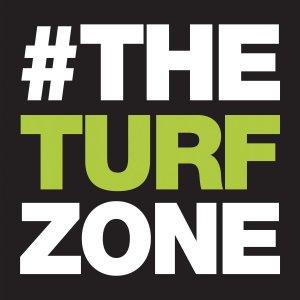The Turf Zone Podcast

Maryland Turfgrass Council – A New Season Comes with New Products
MTC Turf News – Devon Carroll and Jim Brosnan, Ph.D. A new season often brings new technology to the turfgrass industry and 2020 is no exception. Six new herbicides are available to turfgrass managers in 2020 including Coastal, Cheetah Pro, Crew, GameOn, Manuscript, and Vexis. These products contain active ingredients from seven mode-of-action groups with several combined in pre-packaged mixtures. A mode-of-action group indicates the physiological mechanism a herbicide uses to control weeds and can be easily identified on product labeling using the Weed Science Society of America (WSSA) group numbering system [e.g., dithiopyr (the active ingredient in Dimension) belongs to WSSA Group 3]. These new herbicides have been researched for several years at land-grant universities, such as the University of Tennessee, to determine how they can be optimally used to control weeds of cool- and warm-season turfgrass while minimizing environmental impact. This article will outline attributes of these new herbicides to aid turfgrass managers considering incorporating them into their weed management programs this year. Coastal Coastal is a new herbicide mixture from Sipcam Agro that contains prodiamine (WSSA Group 3), imazaquin (WSSA Group 2), and simazine (WSSA Group 5). This mixture can be applied preemergence to control many grassy and broadleaf weeds including crabgrass (Digitaria spp), annual bluegrass (Poa annua), and goosegrass (Eleusine indica). Coastal is labeled for use in many turfgrass systems including golf courses, athletic fields, home lawns and sod farms; Coastal can be applied to several turfgrass species including bermudagrass (Cynodon spp.), zoysiagrass (Zoysia spp.), St. Augustinegrass (Stenotaphrum secundatum), and centipedegrass (Eremochloa ophiuroides) as well. Coastal offers early-postemergence control of several weed species, particularly annual bluegrass. Depending on geography, Coastal should be applied between September 15th and May 31st at rates of 48 to 64 fl oz/A. Researchers at the University of Tennessee observed 100% control of annual bluegrass 24 weeks after treatment of Coastal applied twice at 32 fl oz/A (Figure 1). If used at an early postemergence timing, a single application of Coastal at 60 to 64 fl oz/A is recommended. Coastal can hamper spring transition of warm-season turfgrasses. Therefore, use as turfgrass is emerging from dormancy is not recommended. Cheetah Pro Cheetah Pro is a new herbicide from NuFarm that offers an alternative to glyphosate on select weeds. Cheetah Pro contains 24.5% glufosinate (WSSA Group 10), the same active ingredient in Finale. However, Finale (11.3% glufosinate) is less concentrated than Cheetah Pro, so turfgrass managers must carefully read product labeling to identify optimal Cheetah Pro application rates. As a non-selective herbicide, Cheetah Pro can be applied postemergence to dormant bermudagrass at rates of 24 to 82 fl oz/A based on weed size and growth stage. The herbicide is labeled for control of nearly 200 weed species including common winter annual weeds such as annual bluegrass, henbit (Lamium amplexicaule), and common chickweed (Stellaria media). Cheetah Pro is rainfast within four hours and has low soil residual, making it an excellent product for use preplant in landscape beds. Cheetah Pro is labeled for both commercial and residential turfgrass use. Research at the University of Tennessee has shown that herbicides containing glufosinate can control certain populations of annual bluegrass that have evolved resistance to glyphosate. Sequential applications of Cheetah Pro may be required to control certain weed species and can be applied as early as five days after initial treatment. In a field trial conducted at the University of Tennessee in 2020, applications of Cheetah Pro from 56 to 82 fl oz/A resulted in greater annual bluegrass control (93 to 95%) two weeks after treatment than either Monument (trifloxys...






 Visit Podcast Website
Visit Podcast Website RSS Podcast Feed
RSS Podcast Feed Subscribe
Subscribe
 Add to MyCast
Add to MyCast